Convert the following :
(a) 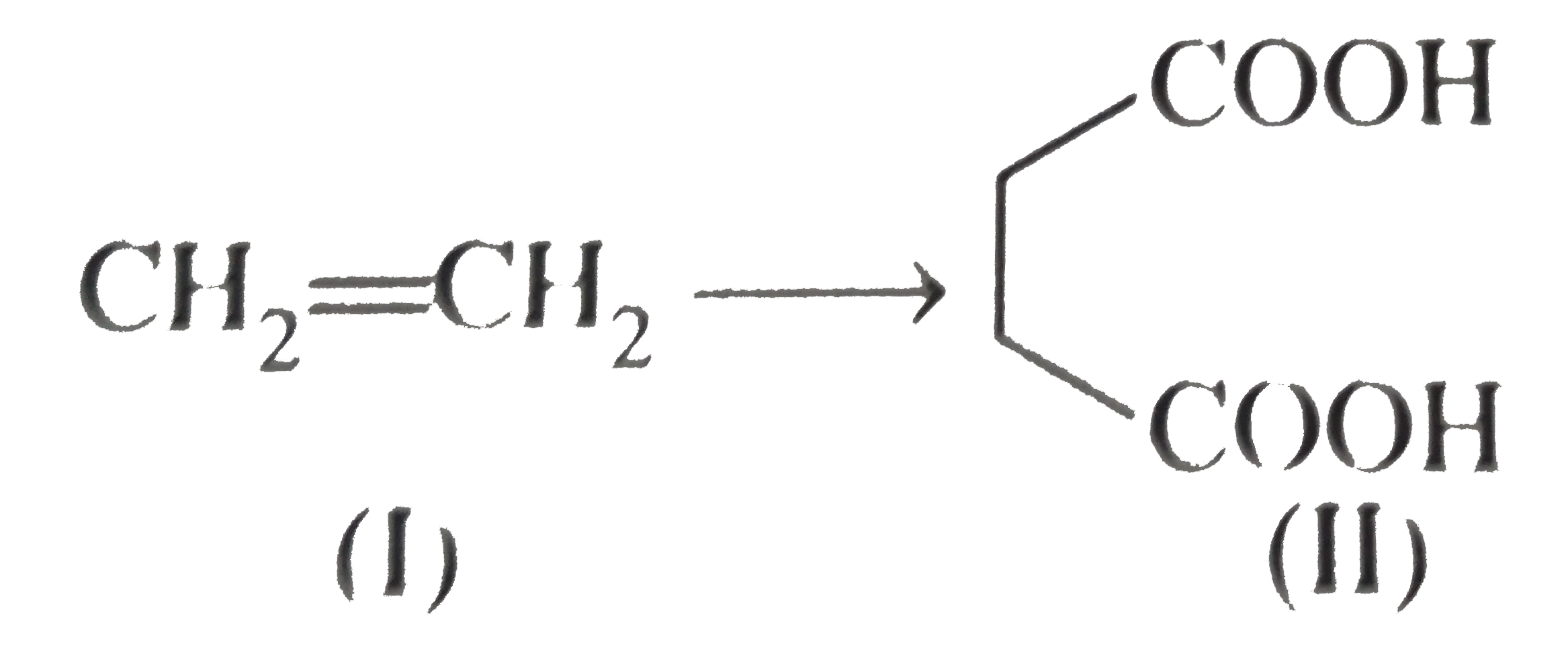
(b)PhH(Benzene)(I)PhCOOH(II)(Benzoic acid)
( c) 
(d) 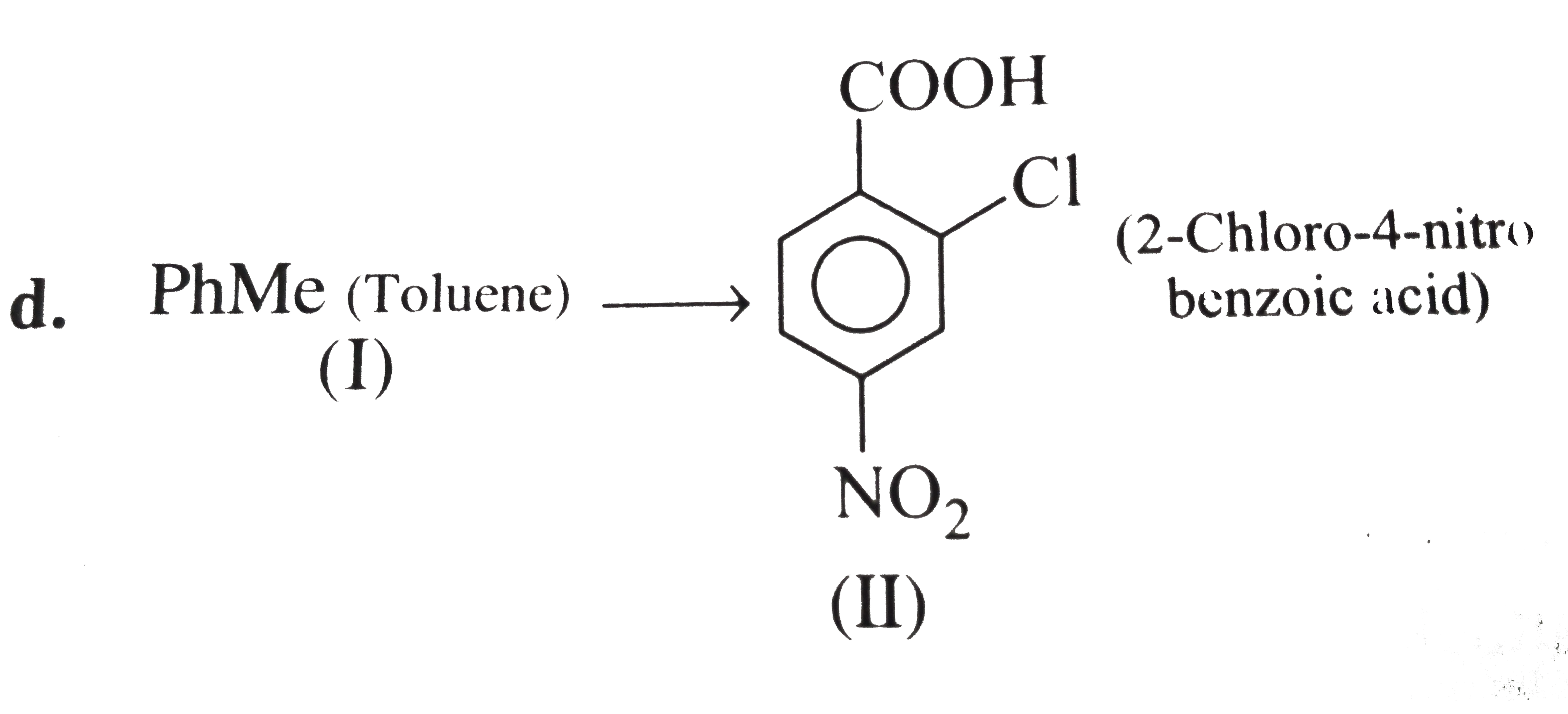
( e) 
(f) 
(g) 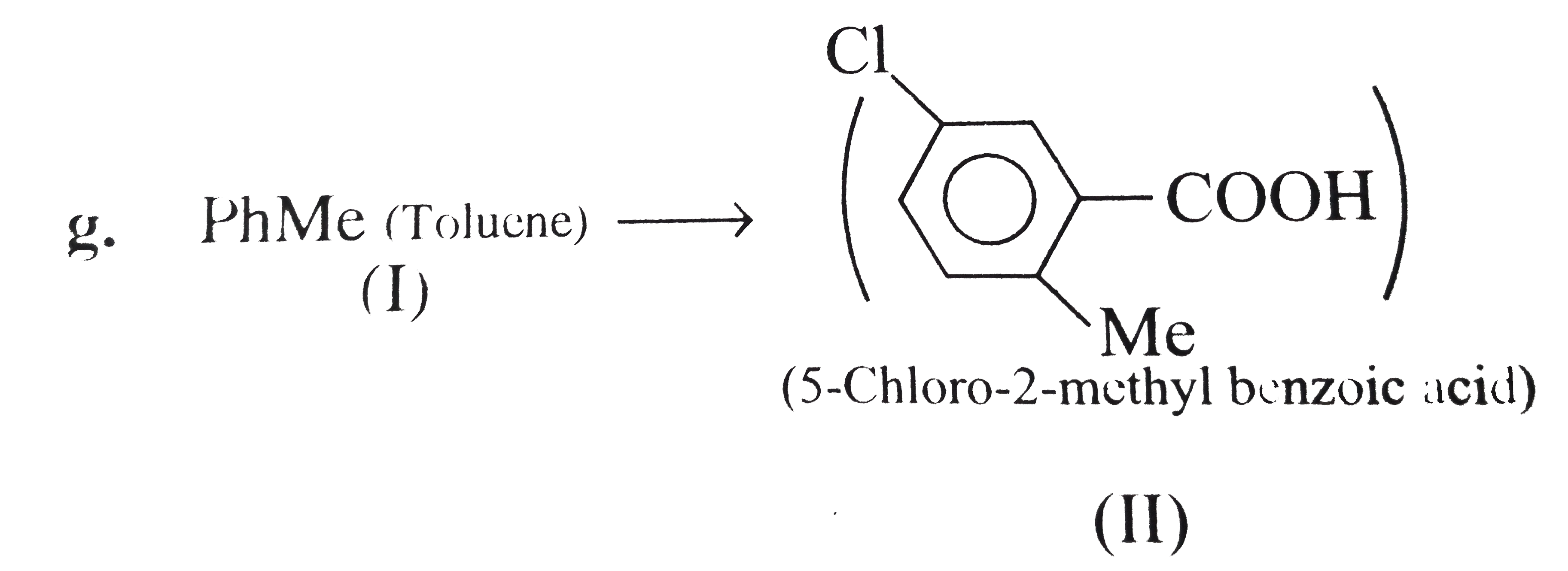
(h) 
(i) MeCOOH(I)(Acetic acid)→(CH2(COOH)2)(Malonic acid)(II)
Video Solution
Text Solution
(a) Here a 2C atom step up method is needed. Convert (I) to dibromo compound and then use cyanide method which on acidic hydrolysis gives 4C−ac.
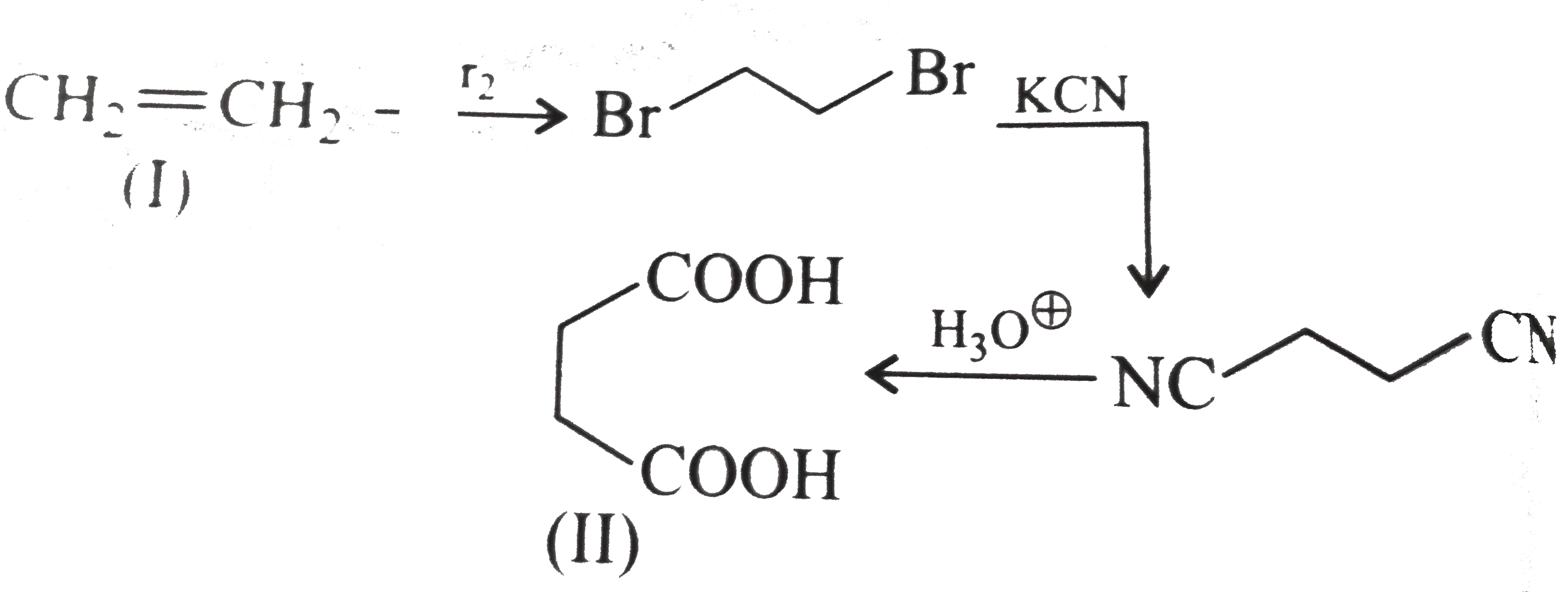
(b) First method :
Convert (I) to toluence by F.C alkylation, which on oxidation gives (II).
PhH(I)CH3Cl+AlCl3−−−−−−−−−→F.C.alkylationPhMe[O]−−−−−−−−→KMnO4/H⊕PhCOOH(II)
Second method :
Convert (I) to PhBr and use Grignard method to obtain (II).
PhH(I)Br2−−−→FeBr3PhBr1.Mg/ether−−−−−−−→2.CO23.H3O⊕PhCOOH(I)
( c) Introduce two (Br) groups in benzene, and then use Grignard method, followed by oxidation of (Me) to (−COOH).
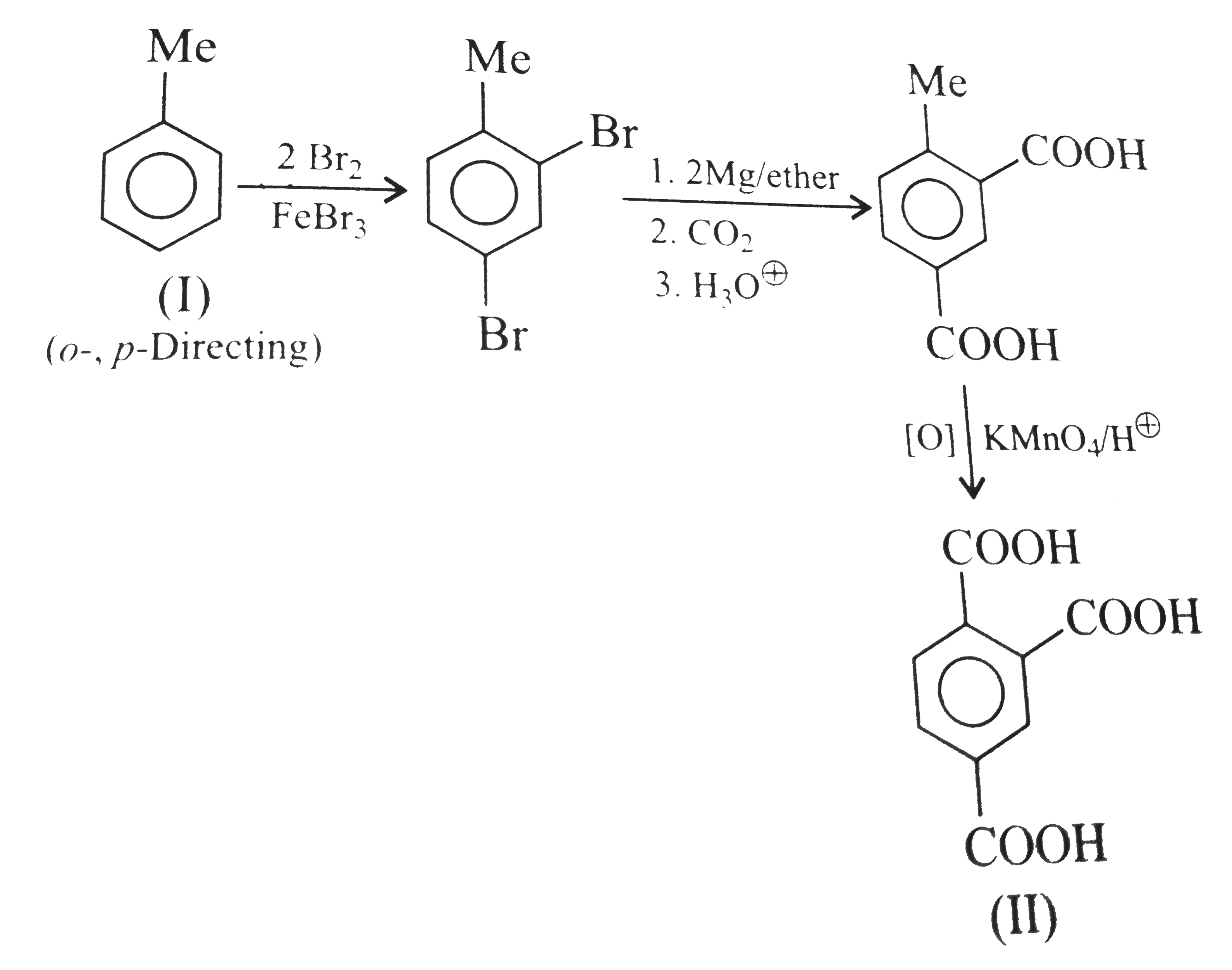
(d) First introduce (−NO2)group at p−position by nitration of (I), followed by chlorination and oxidation,

( e) Allylic or benzylic chlorination by Cl2/hv or Cl2SO2 (sulfuryl chloride) or Me3COCl (t-butyl hypochlorite), followed by dicarbonation by Grinard method.

Note : ArCl (Aryl chloride) in ether (Et2O) is inert to Grignard formation but reacts in THF (tetrahydrofuran or oxacyclopentane), 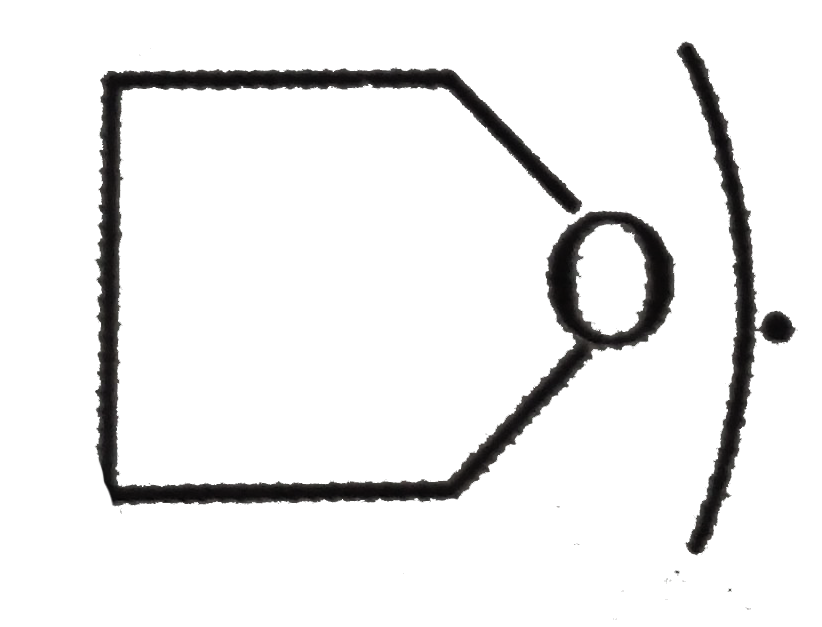 However, ArBr (aryl bromide) in ether reacts with Mg to form G.R.
However, ArBr (aryl bromide) in ether reacts with Mg to form G.R.
(f) Introduce (Br) or (Cl) group at p−position of (I) followed by carbonation by using G.R.
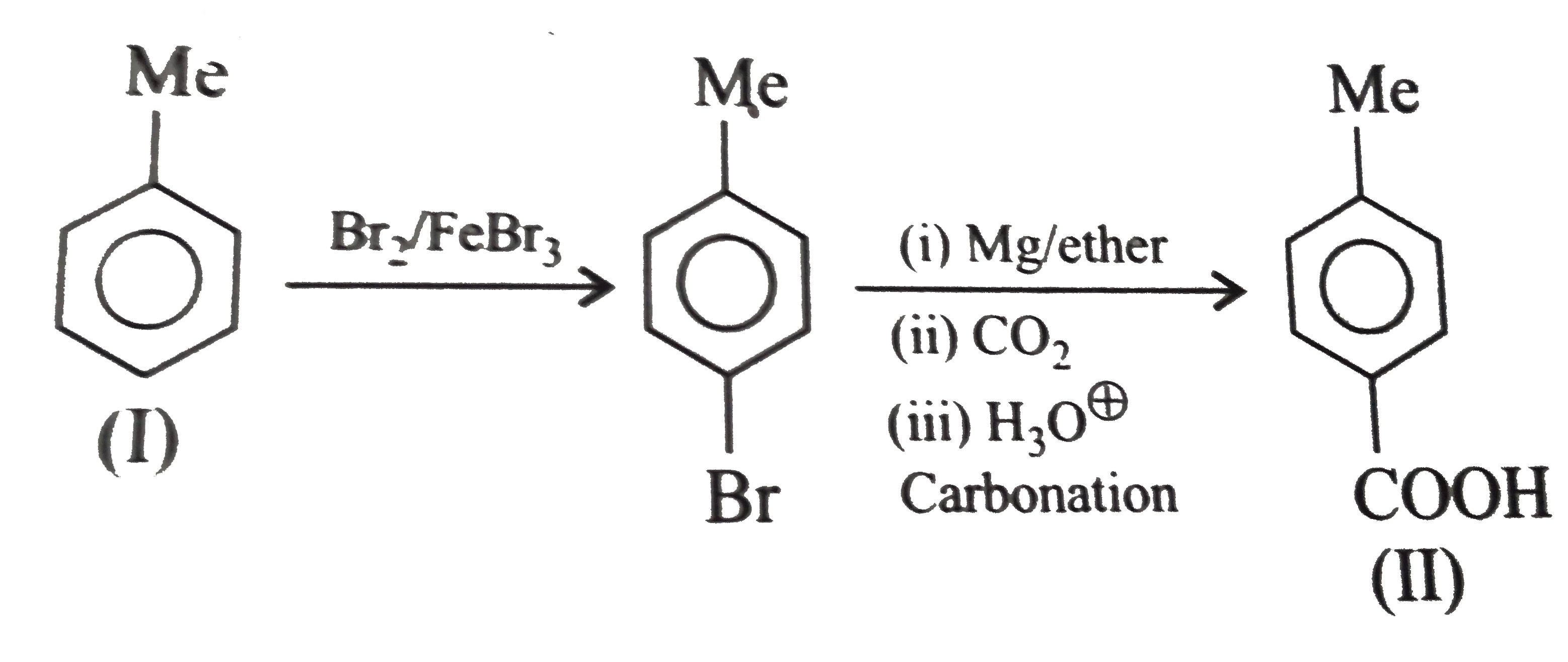
(g) First introduce (Cl) group at p-position and then (Br) group at o−position w.r.t. (Me) group, followed by carbonation by G.R Carbonation will take place with (Br) group and not with (Cl) group, since Br is more reactive than Cl.

(h) This problem is similar to the probelm in (g). First introduce (Br) group at p−position and then (Cl) group at o−position w.r.t. (Me) group, followed by carbonation will Br.
<span class=) <br>(i)Herea1 Ca→mstep−upmethodis≠eded.IntroduceBrorClatalpha-position(H.V.Z method), and then use cyanide method followed by hydrolysis.
<br>(i)Herea1 Ca→mstep−upmethodis≠eded.IntroduceBrorClatalpha-position(H.V.Z method), and then use cyanide method followed by hydrolysis.
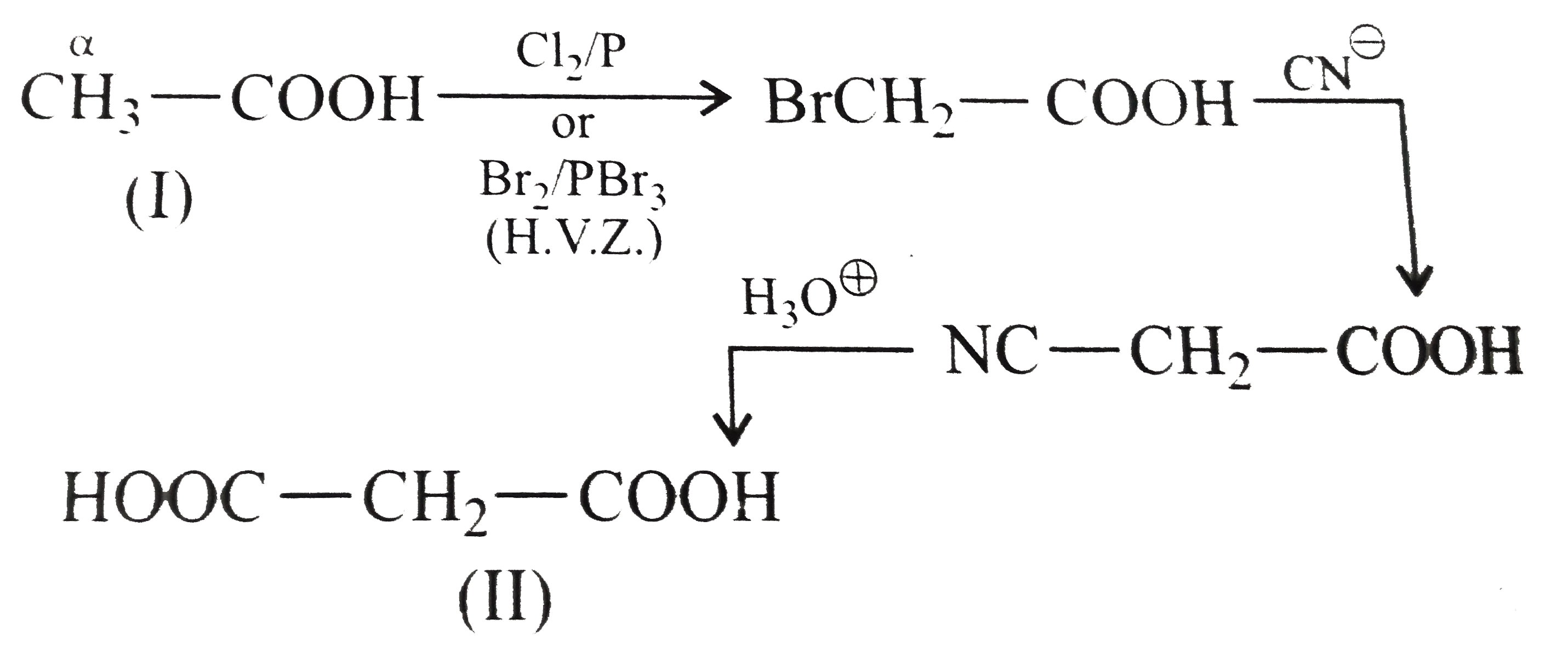 .
.
|
Updated on:21/07/2023
Topper's Solved these Questions
- BOOK - CENGAGE CHEMISTRYCHAPTER - CARBOXYLIC ACIDS AND THEIR DERIVATIVESEXERCISE - Exercises (Subjective)19videos
CARBOXYLIC ACIDS AND THEIR DERIVATIVES
- BOOK - CENGAGE CHEMISTRYCHAPTER - CARBOXYLIC ACIDS AND THEIR DERIVATIVESEXERCISE - Exercises (Linked Comprehension)34videos
CARBOXYLIC ACIDS AND THEIR DERIVATIVES
- BOOK - CENGAGE CHEMISTRYCHAPTER - CARBOXYLIC ACIDS AND THEIR DERIVATIVESEXERCISE - Exercises Archives (Analytical And Descriptive)34videos
CARBOXYLIC ACIDS AND THEIR DERIVATIVES
- BOOK - CENGAGE CHEMISTRYCHAPTER - BIOMOLECULES, POLYMERS AND CHEMISTRY IN EVERYDAY LIFEEXERCISE - QUESTION BANK8videos
BIOMOLECULES, POLYMERS AND CHEMISTRY IN EVERYDAY LIFE
- BOOK - CENGAGE CHEMISTRYCHAPTER - CHEMICAL KINETICSEXERCISE - Archives Subjective23videos
CHEMICAL KINETICS
Similar Questions
Knowledge Check
- Question 1 - Select One
In the compound,
CH2(I)=CH(II)=C=−CH(III)
The most acidic hydrogen atom isAOnly IBOnly IICOnly IIIDAll are equally acidic - Question 2 - Select One
For the following acids
(CH3)3CCH2CO2H(I) (CH3)3⊕NCH2CO2H(II) CH3COOH(III)
pKa value will be in orderAI>II>IIIBI<II<IIICI>III>IIDII>III>I - Question 3 - Select One
The basic strength of
CH≡CI,CH2=CHII,CH3CH−2III
will be in orderAI lt II lt IIIBII lt III lt ICIII lt II lt IDIII lt I lt II
I.U.P.A.C name of H3C−H2C−HC=C∣CH3−HC∣CH3−CH2−CH2−CH3
View SolutionWhich of the following is correct order of esterification of following acids with CH3OH :
HCOOHI, CH3COOHII, CH3−CH2−COOHIII, CH3−CH∣CH3−COOHIVView SolutionIdentify number of chiral carbons in the following compounds
(I)H3C−CH∣OH−CH∣OH−CH2∣OH
(II)
H3−CH∣CH3−CH∣CH3−CH2−CH2View SolutionCH3−CH2(I)−CH=CH2 CH3−CH(II)=CH2
In additon of HBr in I and IIView SolutionConsider following acid
ClCH2COOHI, CH3COOHII, CH3CH2COOHIII
Correct order of their pH valueView Solution

